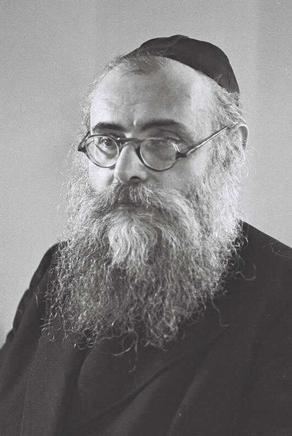Date of birth 30 January 1893 Name Yitzhak-Meir Levin Year of aliyah 1940 Role Politician | Party Agudat Yisrael 1951–1955 Agudat Yisrael | |
 | ||
Date of death 7 August 1971(1971-08-07) (aged 78) Knessets Israeli legislative election, 1949 | ||
Rabbi Yitzhak-Meir Levin, (Hebrew: יצחק-מאיר לוין, Polish: Izaak Meir Lewin; 30 January 1893 – 7 August 1971) was an Haredi politician in Poland and Israel. One of 37 people to sign the Israeli declaration of independence, he served in several Israeli cabinets, and was a longtime leader and Knesset minister for Agudat Yisrael and related parties.
Biography
Born in Góra Kalwaria (known as Ger in Yiddish) in the Congress Poland part of the Russian Empire, Levin studied at yeshivas, before being certified as a rabbi. He married the daughter of Rabbi Avraham Mordechai Alter, head of the influential Ger hasidic dynasty. With a support of his new family, he became involved in politics; he was one of the leaders of Agudath Israel in Poland, was elected to Warsaw Community Council as a representative of the organisation in 1924, and five years later was elected to the World Agudath Israel presidium. In 1937 he was elected as one of the two co-chairmen of the organisation's executive committee. In 1940 he became the sole chairman.
He was also involved in founding the Beis Yaakov school system for religious Jewish girls.
Following the outbreak of World War II, Levin helped refugees in Warsaw, before immigrating to Mandatory Palestine in 1940, where he became head of the local branch of Agudath Israel.
After signing the Israeli declaration of independence in 1948, Levin joined David Ben-Gurion's provisional government as Minister of Welfare. He was elected to the first Knesset in 1949 as a member of the United Religious Front, an alliance of the four major religious parties, and was reappointed to his ministerial role in the first and second governments.
After retaining his seat in the 1951 elections Levin rejoined Ben-Gurion's government as Minister of Welfare, but resigned in 1952 in protest at the National Service Law for Women. He remained a member of the Knesset until his death in 1971, but not a member of the cabinet; in his remaining terms, he represented Religious Torah Front—an alliance of Agudat Yisrael and its worker's branch Poalei Agudat Yisrael.
He was buried on Mount of Olives Jewish Cemetery.
